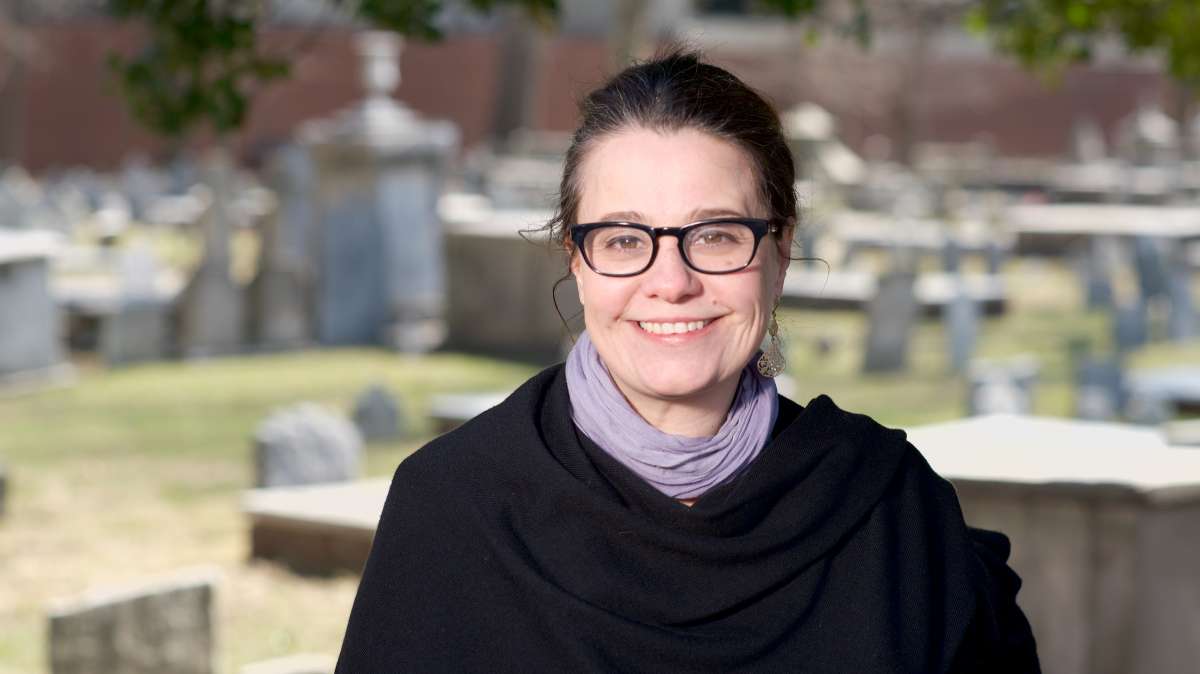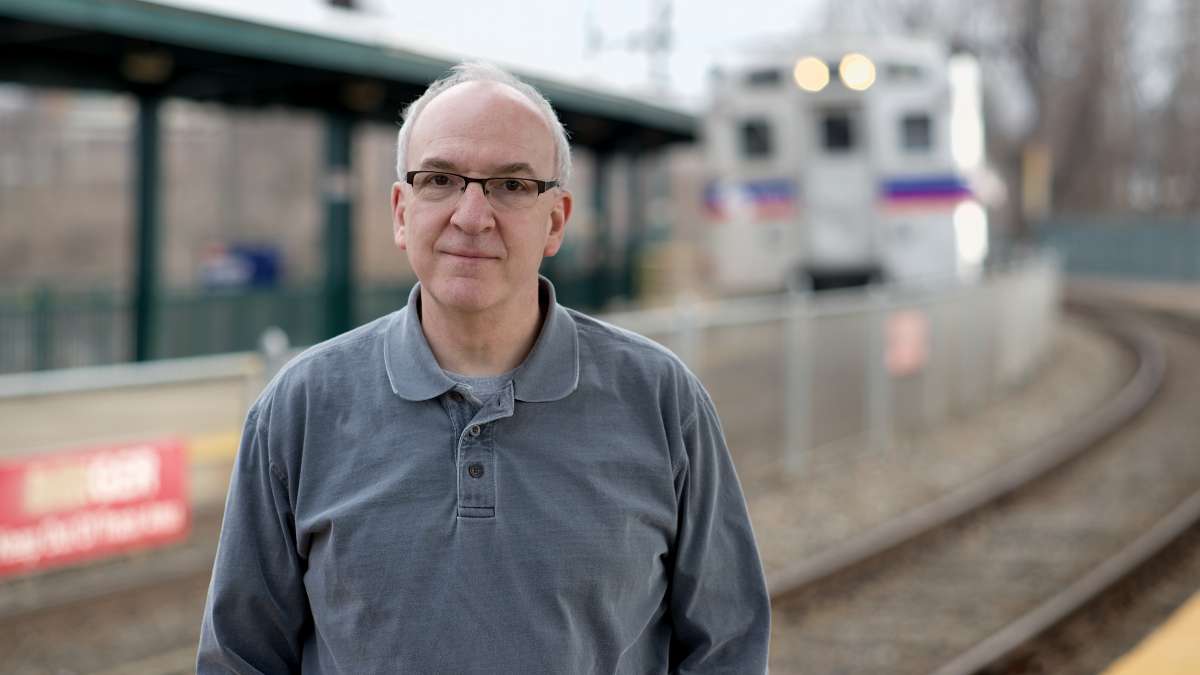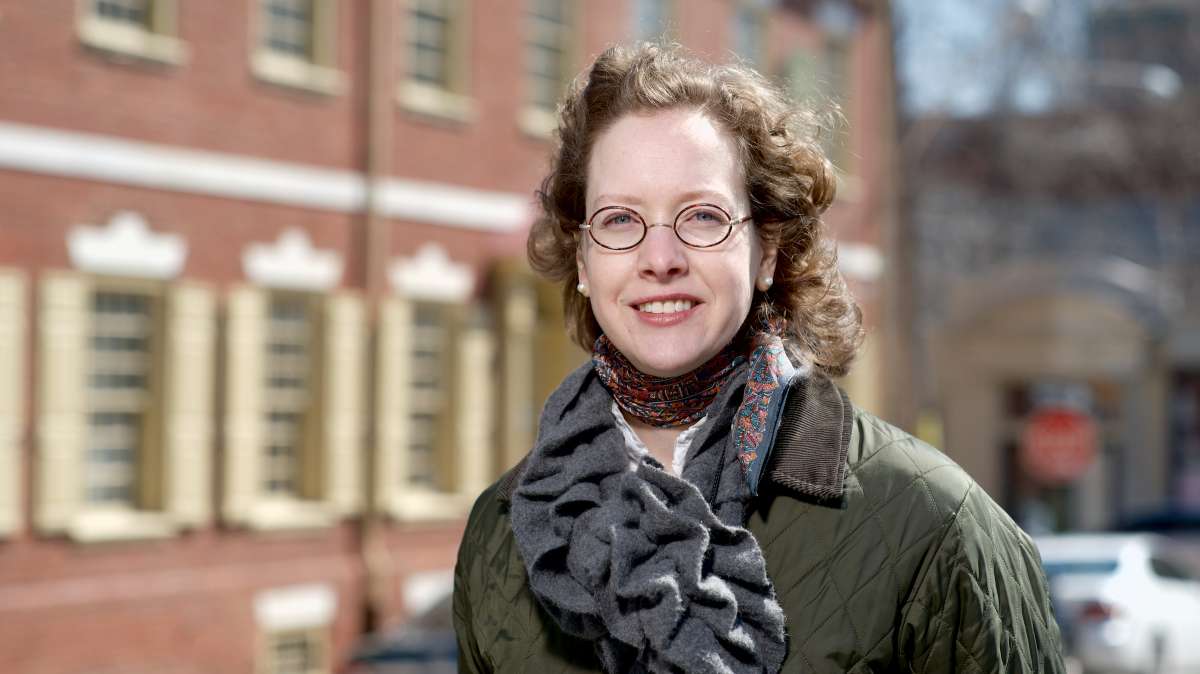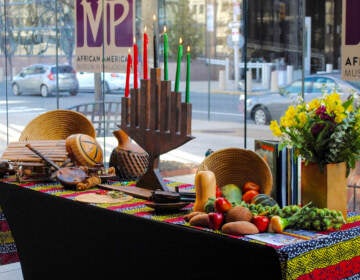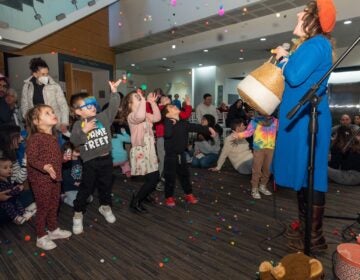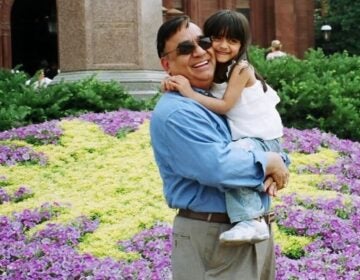Will Germantown ever become an accessible, big-time tourist draw?
Former Historic Germantown executive director Barbara Hogue maintains that there’s a major difference between tourist-friendly sites in Germantown and the better-known draws in Old City.
Germantown’s dedicated base of locals visiting sites and festivals repeatedly means more for community-building than museums with long summer lines.
“It’s not, ‘I’ll never see you again because you’re from Wisconsin,'” she said.
In Old City, you might “have 300,000 people who are coming per year, but they’re only coming once,” added Hogue who, after three years at the helm of Historic Germantown, left to become the executive director of Old City’s Christ Church in March.
From partnering with SEPTA to appealing to adventurous return visitors, locals happily share many ideas for boosting tourist traffic in Germantown.
But can those visions turn into realities?
‘A tourist magnet’
With the tagline “Freedom’s Backyard,” Historic Germantown is the umbrella organization for 16 member sites. They include Wyck House, Stenton, the Ebenezer Maxwell Mansion and Johnson House, one of America’s only officially documented stops on the Underground Railroad.
The group is marking a leadership change when many think it’s time to expand opportunities for tourism.
Laura Keim, a longtime curator at sites like Stenton and Wyck, will serve as interim director while a consultant begins the search for a new permanent director, whom Historic Germantown hopes to install within a few months.
“A lot of people who live in the Northwest really dream of it being a tourist magnet,” said Hogue, noting that her move was personal, not one precipitated by troubles with the Germantown scene.
Andy Trackman, board president of Germantown United CDC, said that the neighborhood compares just as well to, if not better than, Old City in terms of the number of historic sites and their “multi-layered potential.”
But in terms of location, accessibility, size, geography, perception and “public and private investment in the infrastructure,” he said it’s just not fair to compare them, especially when Old City boasts of Independence National Historic Park.
The closest thing the Northwest Philadelphia neighborhood has to INHP is the Germantown White House, and President George Washington’s old summer home has been closed due to federal sequester cuts, affecting an estimated 1,300 visitors, according to the National Park Service.
Sharing the spotlight
For years, some say a dearth of promotions keeps Germantown off the visitors’ map while tourists flock to the Parkway and Independence Hall.
This isn’t the first time NewsWorks has examined the issue.
In 2010, local writer Jim Harris chronicled an experiment in which he asked front-desk employees at sites like the Independence Visitor Center, located on Independence Mall, about Germantown attractions, and getting little help.
“Unfortunately, Philadelphia’s lack of respect for Germantown is nothing new,” Harris concluded. “Why this longstanding reluctance to share the historical spotlight with Germantown?”
Hogue said that organizations dedicated to Philadelphia-area tourism “are really sort of absurdly focused on Center City.” That means “neglect” of outlying neighborhoods with just as much to offer, she surmised.
Citing “high turnover and a lack of education on what’s up here,” Trackman also noted that Northwest residents he’s spoken to have had little success inquiring after Germantown destinations at the Independence Visitor Center.
While the IVC’s website touts attractions as far away as Valley Forge and New Jersey, the only Northwest site listed is the closed Germantown White House.
Still, IVC president and CEO Jim Cuorato told NewsWorks that his staff is well-acquainted with Germantown historic sites.
“They’re definitely worthwhile destinations,” he said. “[Last spring], my visitor-services staff went out and spent a day in Germantown” and were impressed by a “wonderful experience” at a number of sites they hadn’t known about.
Outside help
Keim said Historic Germantown sites attract more than 60,000 visitors annually.
Big draws include an annual Revolutionary Germantown Festival which brings thousands to the Cliveden/Upsala grounds in October. Wyck’s Philadelphia Honey Festival (part of the Philadelphia Science Festival) drew almost 1,000 people in September.
More tourist outreach would be valuable, Hogue said, but that’s “probably beyond the means of any individual site in the neighborhood.”
She said a solution might be a joint campaign with a major organization like Visit Philadelphia (formerly the Greater Philadelphia Tourism and Marketing Corporation), promoting a Philly that’s “Off the Beaten Track.”
For his part, Cuorato said the IVC offers Historic Germantown brochures, and promotes “ticket partners” on its site, which helps to explain the lack of Germantown attractions there.
He also offered a big reason why many visitors don’t head to Germantown from the IVC: The difficulty of “finding a way to get there.”
A trolley to Germantown?
One idea bandied about for decades now is dedicating a bus to fill that need. That solution comes with drawbacks, though.
“It’s one thing getting a trolley,” said Hogue, “but it’s another thing making sure people know about a trolley.”
A shuttle could run from IVC to Germantown and back a few times a day “in an ideal world,” said Cuorato, but financing it would be another story. He pointed to the challenge of launching the summer Philly Phlash, connecting Old City’s historic district to the Parkway every 15 minutes.
“The numbers just don’t support it,” he said of operating a Germantown bus.
SEPTA: Tourist bus not feasible
Fran Kelly, SEPTA’s assistant general manager of public and government affairs, and Kim Heinle, assistant general manager of customer service, spoke with NewsWorks about whether a Germantown tourist loop could become reality.
Touting major renovations currently underway at the Wayne Junction substation as a new Germantown gateway, Kelly and Heinle are enthusiastic about Germantown’s offerings. However, a new bus line is not feasible right now.
Heinle said that between the Chestnut Hill East and Chestnut Hill West regional-rail lines, as well as the 23 bus (“a real slice-of-life ride”), the infrastructure already exists “to partner with all kinds of groups in the Northwest as well as Center City” to promote a tourist-friendly loop.
“There’s a lot of good stuff going on in that particular community, and we believe our part of the puzzle is a big anchor of it,” Kelly added of SEPTA’s role in Germantown’s revitalization.
Heinle said that better catering to out-of-towners’ tourist excursions could include sensitizing Route 23 bus operators to their needs.
He emphasized SEPTA’s willingness to work with visitors: Tourists can always stop by a passenger-services desk in Center City or call SEPTA customer service for customized help.
SEPTA spokeswoman Jerri Williams also pointed to the tour partnership with the Mural Arts Program, in which a guide takes visitors (many of whom “would never ever get on the Market-Frankford Line” without “a tour guide holding their hand”) to view West Philly’s “Love Letters” murals.
Could something similar work in Germantown?
“You start with what you got, and promote it,” Heinle said. “Maybe you focus on the weekend. You start and you build.”
The view from Visit Philadelphia
Meryl Levitz, president and CEO of Visit Philadelphia, agreed that many visitors don’t know how to get to Germantown.
“We know that visitors want to do more than Center City and Old City, because we have done so much to move them not only around the city, but around the region,” Levitz noted. People have limited money, limited time and “they want to go to a place that has lots of dots, all close together.”
She also said Visit Philly doesn’t track the number of guests in individual neighborhoods.
Unlike Old City, Germantown “doesn’t function like a neighborhood where you can say it’s 12 square blocks. Instead, the vision is of this big long avenue and you’re not sure what’s where,” Levitz said.
Pointing the way
Germantown can do its part to boost its appeal, too.
Levitz touted signage and plaques “that show visitors they’re in a place where they’re welcome,” and make them feel good about getting around.
“One of the things that I think makes Germantown really special is that it feels like Germantown,” Keim said. “It’s not ‘Anytown U.S.A.'”
That quality shouldn’t change, but better signage could help “out-of-towners appreciate [Germantown’s] distinctiveness,” she added.
Trackman also said better signage could be a huge help: If you take the train to Allens Lane, “you know you’re near the Wissahickon, but unless you live here, you have no idea how to get there.”
Keim suggested a partnership between Historic Germantown and the business district to hire someone to staff a centralized visitor services kiosk, maybe in the soon-to-be revamped Maplewood Mall.
“Chicken or the egg?”
The arrival of businesses like Rose Petals Café on Chelten Avenue and the new Little Jimmie’s coffee shop in Maplewood Mall repeatedly raise another question.
From the barren, unsafe feel of SEPTA stations like Chelten Avenue on the Chestnut Hill West Line, or Germantown on the Chestnut Hill East Line, to the overall lack of shops and restaurants that would warrant an extended visit, many deemed it a “chicken or the egg” issue.
“It’s more than just historic sites marketing themselves better,” Hogue said. “It’s also about a neighborhood being in a place where it can accept more tourists.”
Does the area need improvements to bolster tourism? Or does it need more tourists to justify improvements?
“I don’t think we could promise that we could fill all the seats in restaurants,” Keim said for Historic Germantown, “but it’s a growth that has to happen together.”
Trackman said he and peers in Chestnut Hill and Mt. Airy are working on collaborative publicity efforts to encourage visitors to do Germantown historic sites and shop and dine nearby.
“There’s really no competition in terms of the actual historic sites,” said Trackman of Germantown’s edge over Chestnut Hill and Mt. Airy.
However, for shopping and dining, the opposite is true, but Germantown is building those amenities.
Competition “might be down the road,” but Trackman said GUCDC partners with Mt. Airy USA and the Chestnut Hill Business Association. “We want to work together because it benefits us all.”
Potential audiences
Trackman touted Germantown’s draw to “younger, more adventurous tourists who are not necessarily intimidated or afraid to explore urban neighborhoods.”
Though Visit Philly can’t produce an estimate of how many visitors fall into this bracket, Cuorato said IVC has recently seen an influx of international travelers in their twenties and thirties — a population comfortable with public transit.
Younger people are the kind of visitors who would catch the El to the Chestnut Hill East Line, get off at Germantown, walk to sites along the Avenue and discover some “pretty funky places to eat,” Trackman said.
Germantown’s diversity is another under-played angle, Trackman said.
Unlike Old City, “Germantown is not just about the Colonial history. It’s not just “George Washington slept here,” but also the stories of many successful African-Americans getting lost in the white-focused narrative of the City’s history, he said.
“I think that is really, really important for Germantown to be recognized as a place of African-American history and culture,” Trackman said, citing the Johnson House, the ACES Museum and the Black Writers Museum as potential draws.
Germantown’s Quakers are a major part of that history, which boasts the country’s first anti-slavery petition in 1688.
“The history of equality and fighting for equality,” said Trackman, “is part of Germantown’s history as well.”
‘You’re the tour guide’
For her part, Levitz said drawing more tourists to Germantown could mean targeting return visitors to Philadelphia.
First-time visitors “do all the things you would expect them to do,” like Independence Hall, the Liberty Bell, cheesesteaks and the Art Museum and/or Rocky statue.
Return visitors, though, may “feel the confidence to start pursuing their own passions that might take them out of their original comfort zones,” she said.
For now, Levitz would advise Germantown to focus on an easily updated, integrated web platform to share tourist information. (Keim said Historic Germantown is intended to be “the central point of entry for visitors” and that its website stays updated.)
“We are always working to upgrade and improve our online presence, including social media,” Keim added.
Levitz also urged Germantowners to appoint a Visit Philadelphia liaison to connect Germantown with citywide festivals like Welcome America, advocate for events and help develop the content that Visit Philadelphia could distribute through platforms like Uwishunu.com.
“Advocacy for Germantown is certainly something we can continue to develop,” Keim agreed.
Despite leading one of the region’s premier marketing machines, Levitz emphasized the biggest determiner of tourists’ destinations: Friends and family.
“You’re the travel agent. You’re the tour guide,” she said. “If friends and family know what Grumblethorpe is, what Wyck House is, what Johnson House is, they can be the drivers.”
If Philadelphians who know and love Germantown don’t advocate spending time there, Levitz concluded that “it’s an opportunity lost over and over.”
WHYY is your source for fact-based, in-depth journalism and information. As a nonprofit organization, we rely on financial support from readers like you. Please give today.

